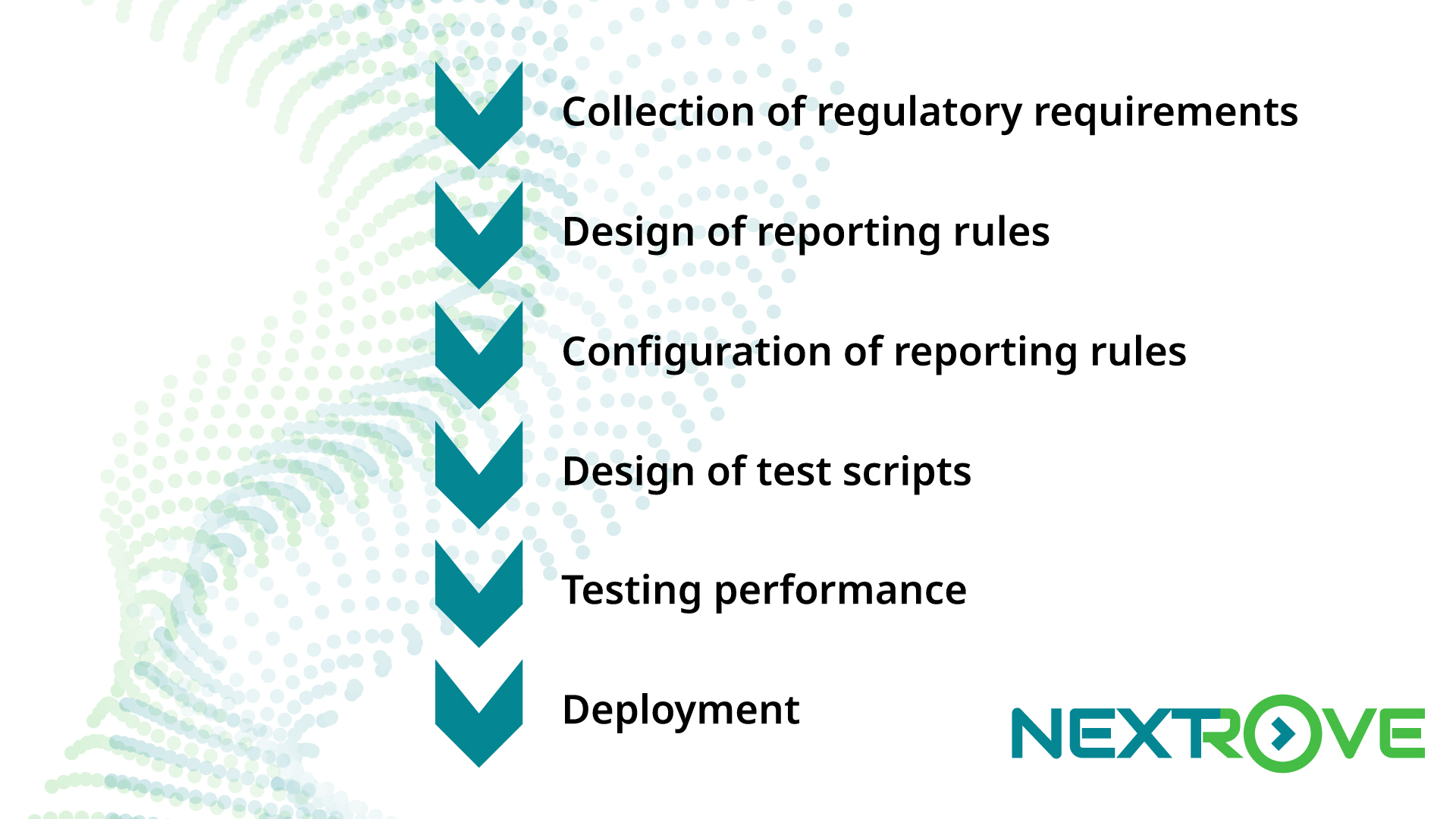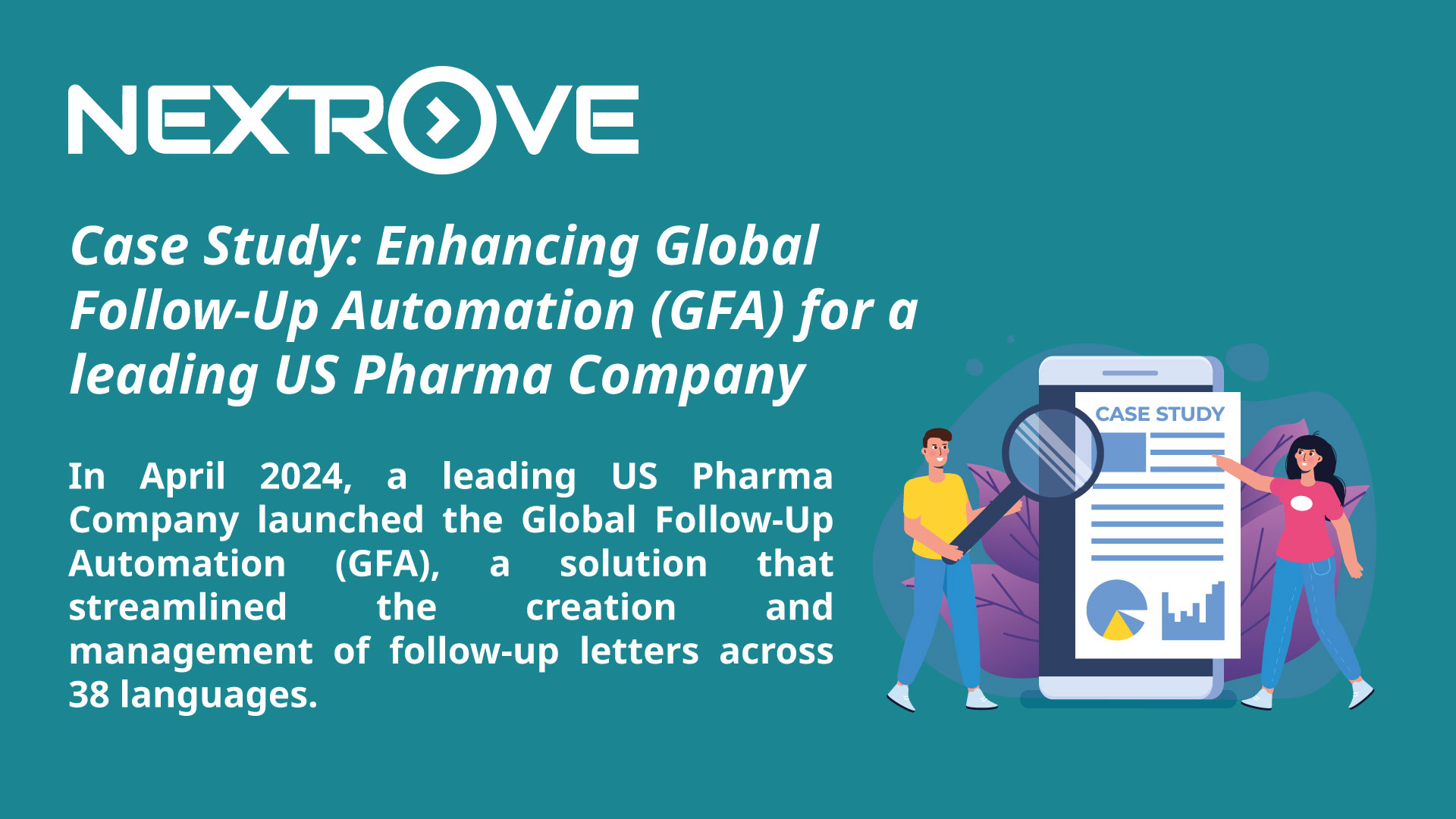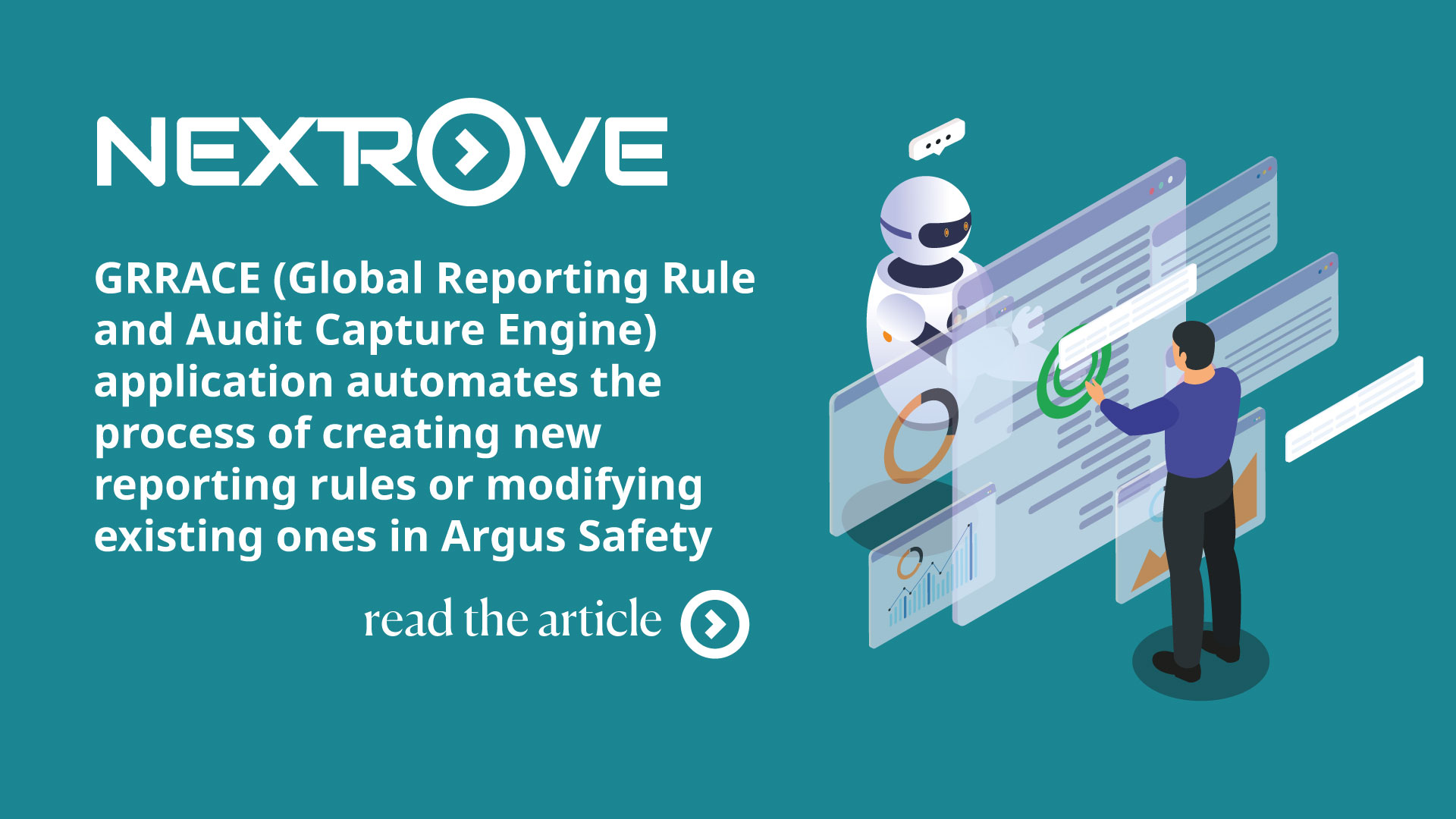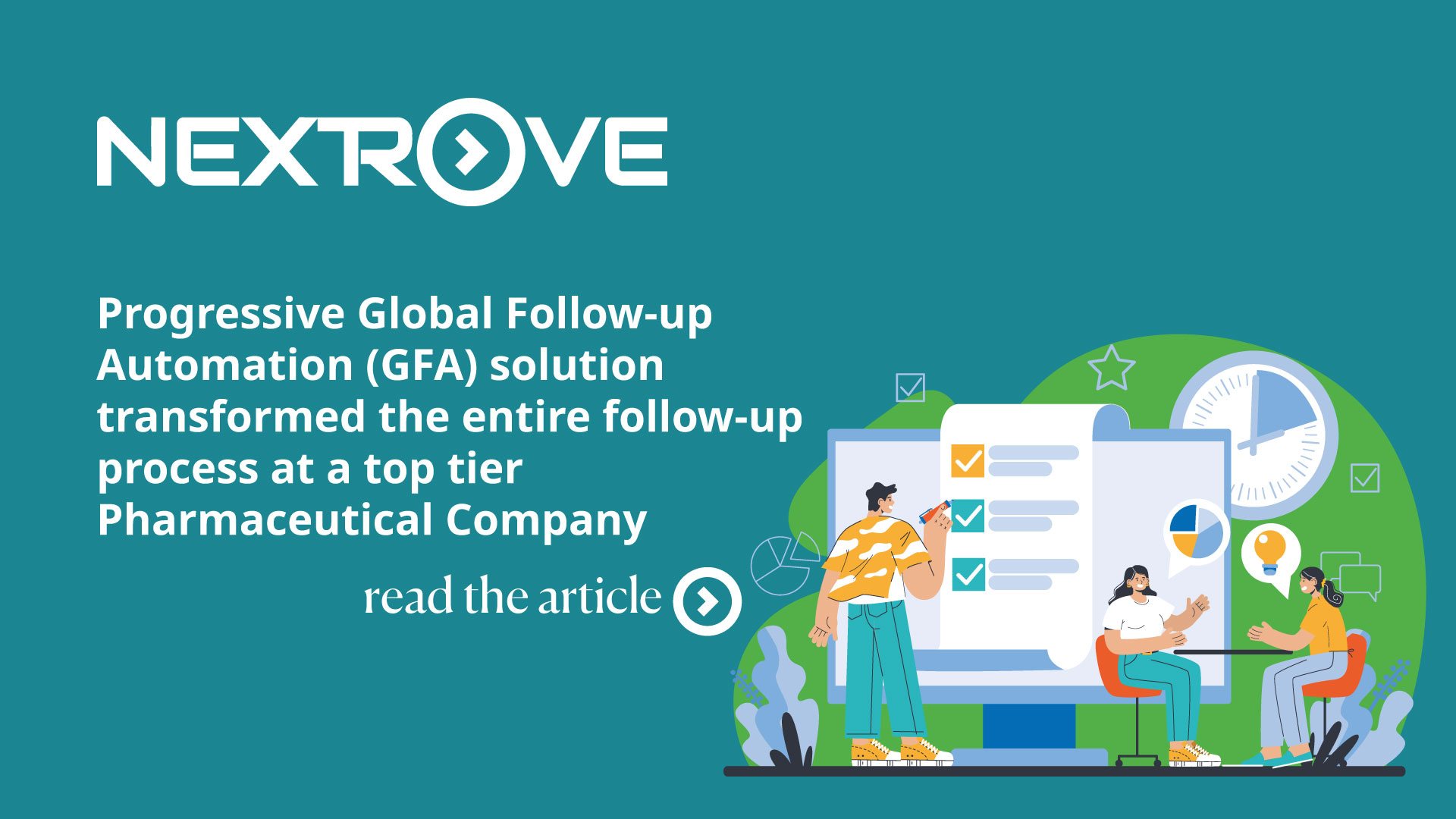Case Study: Enhancing Global Follow-Up Automation (GFA) for a leading US Pharma Company
Overview
In April 2024, a leading US Pharma Company launched the Global Follow-Up Automation (GFA), a solution that streamlined the creation and management of follow-up letters across 38 languages. After a successful launch, Phase 2 of the project was initiated in September 2024 with a focus to enhance both letter quality and tool usability, guided by users’ feedback and evolving business needs.
Objective
- Improve the quality of multilingual follow-up letters.
- Enhance the usability and editing capabilities of the tool.
- Implement prioritized change requests from the client.
Approach
Originally planned as a waterfall project, the Nextrove team adapted to client’s request for early previews of features by shifting to an agile delivery model. This allowed faster feedback loops and better stakeholder engagement.
Phased Development
Features were divided into three batches
Iterative Delivery
Each batch was developed, reviewed by the client, and refined based on feedback
Integrated Flexibility
Feedback from earlier batches influenced the development of subsequent ones
This approach allowed the client more time to finalize requirements for later changes while still staying within the overall timeline.
Challenges & Solutions
One of the key challenges in this project was balancing the need for flexibility with the discipline required to maintain control over a complex development process. While the original plan followed a more traditional waterfall methodology, expressed a strong preference for early visibility into new features — rather than waiting for the entire development cycle to complete. This request, though valuable from a user engagement perspective, introduced complexity in tracking development across multiple stages.
To address this, the Nextrove team made a strategic pivot to a more agile-inspired approach. Instead of bundling all changes into a single final release, the team divided the enhancements into three logical batches, developing and delivering each one sequentially. After each batch was deployed, the client had the opportunity to review the features, provide feedback, and suggest refinements which were then incorporated into the next round of updates.
While this iterative approach required careful coordination and meticulous change management, it ultimately allowed for more adaptive planning and stronger alignment with the client’s evolving priorities. It also gave the client team additional time to finalize their requirements for later phases, which proved especially helpful in a multilingual and highly regulated context.
Results
This flexible yet structured delivery method paid off in several important ways:
- The project was delivered on time and in accordance with the original plan, despite the mid-course shift in methodology.
- Client reported increased satisfaction with the tool’s usability, particularly the enhanced editing capabilities and overall letter quality.
- The collaborative, transparent process helped deepen the relationship with the client, reinforcing trust and paving the way for future work — including the upcoming Phase 3, which the client entrusted to the same team.
Client Feedback
The strongest validation came from client’s decision to launch Phase 3 — a significantly larger and longer initiative — and their specific request for the same project team.
Team Recognition
The success was made possible by the exceptional dedication and collaborative spirit of the team. The client specifically acknowledged the contributions of team members, highlighting not only their technical expertise, but also their responsiveness, adaptability, and commitment to excellence throughout the project lifecycle.
Shivi, Shoaib, Shubham P., Nazila, Anu, and Aparna each played a vital role in ensuring that the project met its goals — from managing complex multilingual requirements to navigating the shift toward an agile delivery approach. Their ability to stay focused under pressure, respond quickly to evolving client needs, and work cohesively was consistently recognized and appreciated by the client.
This recognition from the client reflects the strong working relationship built during the project and underscores the value of having a dedicated, cross-functional team that truly understands both the technical and business dimensions of the work. The client’s decision to request the same team for Phase 3 is a testament to the trust and confidence earned through their efforts.
Case Study: Global Reporting Rule and Audit Capture Engine (GRRACE) solution
Global Reporting Rule and Audit Capture Engine (GRRACE) solution automated the process of creating new reporting rules or modifying existing ones in Argus Safety at a top tier Pharmaceutical Company
Overview
Nextrove has been supporting one of the world’s premier biopharmaceutical companies to automate, simplify and optimize the end-to-end development of Argus Safety reporting. Nextrove’s GRRACE (Global Reporting Rule and Audit Capture Engine) application has been leverage for the project.
The Goal
Creation and maintenance of Argus Safety reporting rules to auto-schedule reports for submissions to multiple destinations includes several steps and multiple stakeholders:

Reporting rules are a critical component of Argus Safety configuration to ensure compliance with regulations. Each step requires approval by respective stakeholders and extensive QC. Additionally, the cycle re-start to incorporate in reporting rule any new regulatory change including tracking of the relevant maintenance activities to demonstrate compliance with the effective date of regulations.
The manual end-to end process includes a series of hand-offs, paper-based configuration design, archive maintenance to document the entire cycle from requirements to testing, from QCs to approvals and to deployment.
Objective of project was to automate the entire end-to-end process, to track all actions, to keep records of approvals, to support inspections readiness via an application audit-ready, and to maintain and monitor metrics.
The Approach
Nextrove GRRACE application includes a workflow with various steps, and it is audit ready.
The process starts with entry of regulatory requirements by the business department(s). Upon approval, the second step includes the automatic transposition of requirements,
based on defined and configured rules, into a screen mimicking the fields of Argus console. An Advance Condition (AC) Library is available to select the appropriate AC. Following approval of the reporting rule design, the reporting rules script designer supports the preparation of test scripts. Upon approval of test script, testing is performed, and results embedded and archived in the application. Deployment in Argus Safety and in multiple environments happens automatically and Argus Safety console is automatically populated, following approval of test results.
The Benefits
Nextrove GRRACE automates the process of creating new reporting rules or modifying existing reporting rules in Argus Safety.
Nextrove GRRACE provides one single repository for activities, approvals and documentation supporting the creation of reporting rules and increases efficiencies by eliminating manual hand-offs.
Additionally, by automating key stages from requirement to deployment, it significantly reduces operational costs and time.
From a quality perspective, Nextrove GRRACE ensures transparency for end-to-end process and facilitates inspection readiness by incorporating the audit trail and providing a dashboard to generate reports and collect metrics.
Client Testimonials
Nextrove Team showed consistency, passion and Knowledge and contributed at the highest level for the go-live accomplishment. They are all resources I would like to work with in upcoming activities
About Nextrove: About Us - LinkedIn - Contact us
Case Study: Progressive Global Follow-up Automation (GFA) solution
Progressive Global Follow-up Automation (GFA) solution transformed the entire follow-up process at a top tier Pharmaceutical Company
Overview
The role of pharmacovigilance is monitoring safety of marketed drugs and investigational products to support and ensure patient safety. When first received, adverse event information is often incomplete. These reports should be followed-up as necessary to obtain supplementary detailed information significant for the scientific evaluation of the cases. Client followed a manual process for generating follow-up letters and questionnaires with specific event/product pair questions.
This process is labor-intensive, with a suboptimal rate of response from reporters and includes a high cost for mailing. Lack of a user-friendly mechanism to provide responses by the reporters required additional manual intervention by the Client teams.
Increasing number of new sources of information need to be managed like social media, patient support programs or customer engagement programs.
The budget allocated to case processing is a large amount of the total pharmacovigilance budget and is growing due to increasing case volume.
Solution
Nextrove collaborated with the Client and launched a project to optimize and automate the follow-up data collection process by leveraging Progressive GFA. GFA application enables business users to streamline the process by auto-identifying missing data in a case, then generating custom configured letters and questionnaires for product/event pairs including only the specified missing data, accompanied with a cover letter.
Deployed 440 letters and questionnaires in 38 languages.
Nextrove configured Progressive GFA to generate follow-up letters and questionnaires with pre-defined data fields and to identify the supplementary data to be requested for the case according to Client policies and business process.
GFA enabled the capability to enter reporter’s responses, when provided via phone, directly in the application and to ingest the relevant form automatically as source document in the safety database.
Following Client operational procedures, action items management was automated (e.g. closure of follow-up letter action items, and management of reminders).
GFA is audit and inspection ready. All activities performed through this application, are tracked allowing follow-up monitoring and relevant metrics generation.
Results

Client Testimonial
“Thank you Nextrove team for the tremendous efforts, dedication, and hard work in implementing this innovative and complex project with finesse and great success. It stands as a testimony to the Nextrove team's extraordinary skills and expertise. Kudos to you all! “
Perspective: GFA Return on Investment
Greater than 150% ROI, ROI grows with growing case volume.
Assumptions: 1. Follow-up data collection is done via email for 80% of the 3000-case volume per year 2. Postal communication scenarios are excluded and not applicable 3. Industry averages (on the conservative side) have been used for the calculation.



